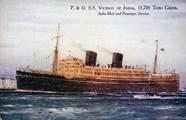
My Ph.D. thesis advisor, Professor Marvin Minsky, was often interviewed by reporters about our lab's robotics project, and articles kept appearing saying that we were building a robot that could play ping-pong. We were doing nothing of the sort, but no matter how hard we tried to deny it, the story kept re-surfacing. Note 1 Because he was a mathematician by training, Minsky called such tales "eigenstories", by analogy to the "eigenvalue" solutions to certain types of differential equations. The "eigenvalue" is the part of the solution that results from properties of the system being modeled by the equations, independent of the input to the system. Note 2 The "system" which propagates a story is the person or persons telling and retelling the story over time. This can be most simply seen in the game of "telephone", in which a story is whispered down a line of children, and emerges unrecognizable at the end of the line. In the world at large, an "eigenstory" results when a story gradually converges to an account that appeals strongly to the people retelling it. In the simplest terms it is just a story that people like, and hence the tale will tend to evolve in that direction when fed an initial version (the "input") that is anywhere close to it. I was the only person propagating my version of the story of Alice's cat. I must have gradually embroidered it over the years to make it "better" (although further from the truth). More often, stories are altered by being told and retold by large numbers of people, not just one, over a significant amount of time. One place this effect is seen is in what is called "pop etymology". Etymology is the study of word origins. Because it's an interest of mine, I've learned that many word-origin theories circulate that have no basis in fact.
A cute story. People seem to love it, but it appears to be complete nonsense. The relevant entry in World Wide Words says, "The trouble [with this story] is thereís absolutely no evidence for it and P&O flatly denies any such term existed. Itís just a legend, though a very persistent one. One argument against it is that posh is known from 1918, while the story of its origin first appears only decades later." Similarly, as a speaker of French, I was seduced by a supposed origin of the English word "barbecue" that evoked the image of a whole goat on a spit roasting over a fire, being cooked "de la barbe à la queue" (from the beard to the tail), hence "barbe-à-queue". This idea is perhaps reinforced by the alternate spelling "barbeque", or even "bar-B-Q". But again, it's nonsense. "Barbecue" comes directly from a Spanish word, "barbacoa". Note 3 The eigenstory effect may have influenced more significant tales than those in my blog and stories about word origins. Joseph McCabe discussed Ali Mohammed, called "the Bab" (the gate), upon whose writing the Bahai religion was later based. McCabe wrote, "... two or three years after the death of the Bab his life was written, and it was a purely human account of a Christ-like man; but some decades later a new life appeared richly embroidered with miracles in the Gospel manner!" Note 4 And what about the Gospels themselves? Most historians believe that the earliest Gospel, Mark, was not written until at least thirty years after the death of Jesus. McCabe continues, "If these lives of Jesus, the Gospels, were not written until some decades after his death, we must read them with great caution." Note 5 Tales of the resurrected gods Horus, Osiris, Mithras, Attis, Adonis, Tammuz, Orpheus, and Jesus - could these be different instances of the same eigenstory? Note 6 So maybe some of my blog entries are more the product of my brain than of reality, and you need to take them with a grain of salt. But I do the best I can.
  Note 1: I'm sure that such a goal was out of reach of the technology of the time, the late sixties (it could probably be done now). [return to text] Note 2: Differential equations are often used to mathematically model mechanical systems which are driven by certain defined inputs - for example, think of pushing a swing a given number of times a minute. The differential equation describing the resulting motion of the swing is the sum of two solutions. The "homogeneous" solution (the eigenvalue) is the natural motion of the swing in the absence of a driving input - it describes the swing's natural resonant frequency (the word "eigenvalue" comes from the German word "eigen", meaning "own", or "self"). The "particular" solution results from the driving force. I think Minsky coined the term "eigenstory", and was the only one who used it. It does not turn up in a Google search. [return to text] Note 3: There are entire books about folk etymologies, which have been called "etymythologies" by Laurence Horn. One of the best is by Michael Quinion, the editor of World Wide Words. Quinion is British, and in the UK, the book is called (what else), "Port Out Starboard Home". But in the US, the publisher renamed it "Ballyhoo, Buckaroo, and Spuds: Ingenious Tales of Words and Their Origins". Click the following link to see a review by Dr Patrick Hanks, with links at the bottom of the page to Amazon (in various countries) to allow you to buy it. [return to text] Note 4: McCabe, Joseph. The Myth of the Resurrection and Other Essays. Buffalo: Prometheus Books, 1993. (ISBN 0-87975-833-3) pp. 78-79. [return to text] Note 5: Ibid, p. 79. [return to text] Note 6:
The next link takes you to an interesting web page called Pagan Origins of the Christ Myth. [return to text]
 |
 My blog entry #0062,
My blog entry #0062,  Consider, for instance, the tale that the word "posh" (meaning "luxurious") comes from the abbreviation "Port-Out Starboard-Home". It was said that the wealthiest British passengers on ships of the Peninsular and Oriental Steamship Company traveling from England to India wanted staterooms on the shaded (north) side of the ship. They thus specified staterooms on the port side on the outbound leg of the trip, and on the starboard side on the return leg. This was abbreviated POSH in the passenger manifest.
Consider, for instance, the tale that the word "posh" (meaning "luxurious") comes from the abbreviation "Port-Out Starboard-Home". It was said that the wealthiest British passengers on ships of the Peninsular and Oriental Steamship Company traveling from England to India wanted staterooms on the shaded (north) side of the ship. They thus specified staterooms on the port side on the outbound leg of the trip, and on the starboard side on the return leg. This was abbreviated POSH in the passenger manifest.